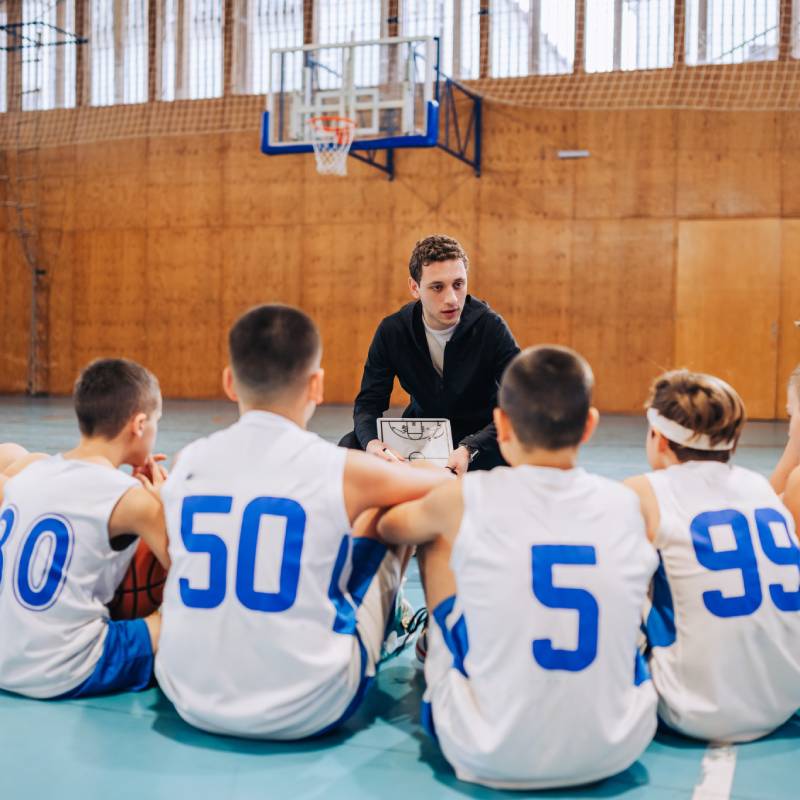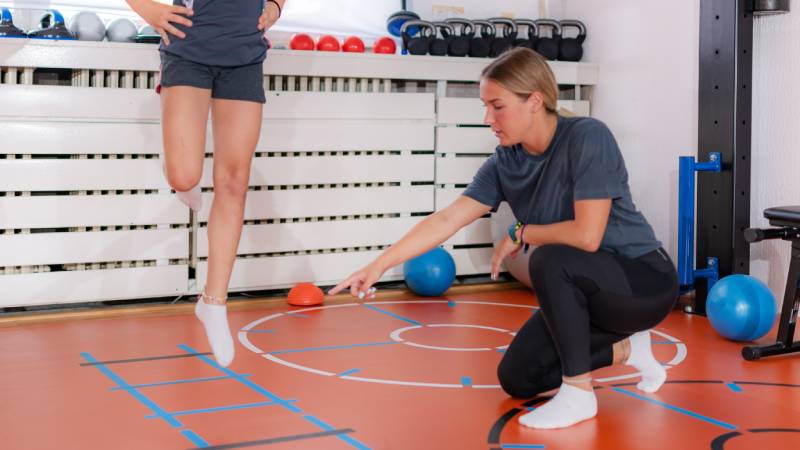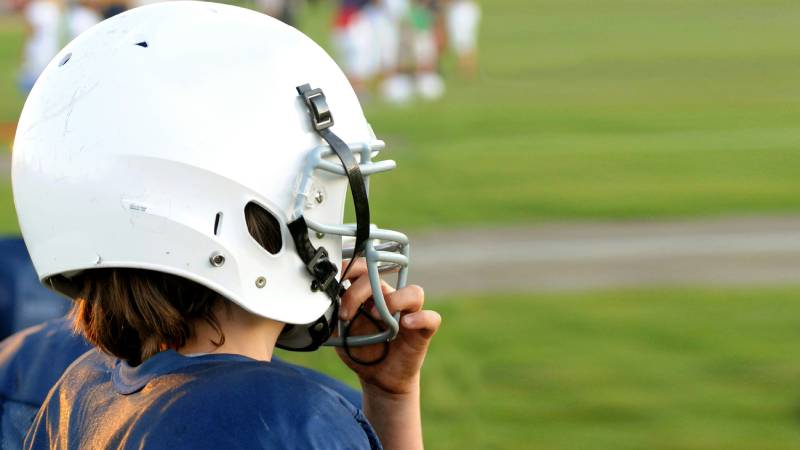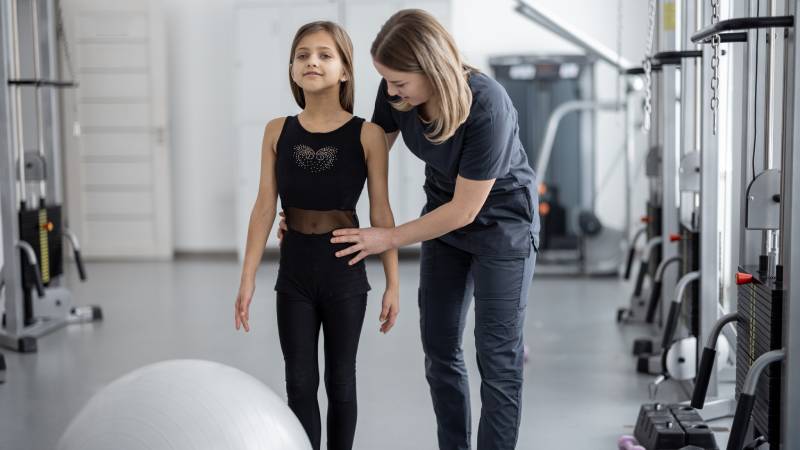Concussion: Key Prevention Strategies

Concussions – minor brain injuries caused by a blow to the head – are a growing public health problem, particularly in sport. Preventing concussions is crucial to protecting the health and well-being of athletes. Fortunately, several effective strategies can be implemented to reduce the risk of these injuries [1].
Concussion education and awareness
Educate athletes:
- Provide clear, accessible information about concussions, including causes, symptoms, short- and long-term consequences and return-to-play protocols.
- Use a variety of teaching aids such as brochures, videos, presentations and interactive workshops to facilitate understanding.
- Encourage athletes to ask questions and express concerns about concussions.
Sensibiliser les entraîneurs:
- Train coaches to recognize the signs and symptoms of concussions, including behavioral changes, balance problems, headaches and confusion.
- Educate coaches on concussion management protocols, such as immediate withdrawal from play, medical evaluation and appropriate follow-up.
- Emphasize the importance of creating a safe training environment and promoting a sports culture that puts athlete health ahead of performance.
Raise parents’ awareness:
- Educate parents about concussions and the risks faced by their child athletes.
- Provide parents with tips on how to monitor their children for signs and symptoms of concussion.
- Encourage parents to contact coaches and medical staff if concussion is suspected.
Raise awareness among medical staff:
- Train doctors, nurses and other healthcare professionals to properly assess and diagnose concussions.
- Regularly update medical staff on the latest knowledge and recommendations for concussion management.
- Promote collaboration between medical staff and other players involved in sport to ensure optimal care for injured athletes.
Sports rules and regulations to prevent concussion
- Apply and enforce rules and regulations to reduce head contact and dangerous hits.
- Adapt rules according to age, level of competition and type of sport.
- Prohibit dangerous practices such as intentional blows to the head, illegal charges and dangerous tackles.
- Severely penalize rules violations that increase the risk of concussion.
- Encourage a safe, responsible style of play that minimizes the risk of head injuries.
- Promote sportsmanship and respect among players.
- Emphasize movement control and avoidance techniques to minimize head contact.
Protective equipment and Brain injury
- Ensure that athletes wear protective equipment that is adequate, properly fitted and approved according to safety standards [2].
- Provide advice on the proper selection, fitting and maintenance of protective equipment.
- Regularly replace worn or damaged equipment.
- Helmets:
- Require the wearing of approved helmets for sports with a high risk of head contact, such as American soccer, ice hockey and rugby.
- Ensure that helmets fit properly and are free from damage.
- Face protection:
- Use face protectors for sports at risk of facial injury, such as lacrosse and ice hockey.
- Mouthguards:
- Encourage the use of mouthguards for sports that risk injury to the mouth and jaw, such as soccer, basketball and ice hockey.
- Choose comfortable, well-fitting mouthguards for optimal protection.
- Sport-specific equipment:
- Promote the use of additional protective equipment specific to certain sports, such as cervical collars for combat sports or padding for sliding sports.
Preventing Concussion through Adapted Training Techniques
- Teach athletes proper training techniques to improve neck strength, balance and proprioception (the ability to perceive body position and movement).
- Include muscle-strengthening exercises targeting neck and core muscles in training programs.
- Integrate balance and coordination exercises to improve stability and the ability to react quickly to changing situations.
- Train athletes in safe tackling and contact techniques.
- Emphasize control of movement, body position and use of proper technique to minimize the risk of head injury.
- Practice non-contact tackling and contact techniques at full speed before moving on to actual contact.
- Incorporate physical conditioning exercises to improve endurance and reduce fatigue.
- Fatigue can increase the risk of injury, including concussion.
- Improving athletes’ physical condition can help them stay focused and coordinated during training and competition.
Monitoring and follow-up of brain injuries
- Establish clear protocols for the identification, assessment and management of concussions.
- These protocols should include guidelines for coaches, parents and athletes on how to recognize the signs and symptoms of concussion.
- They should also define assessment and progressive return-to-play procedures.
- Train coaches and medical staff to recognize the signs and symptoms of concussion.
- These signs and symptoms can include headaches, dizziness, vision problems, nausea, vomiting, confusion, irritability, concentration and memory problems, and balance problems.
- Monitor injured athletes and ensure a safe and gradual return to play.
- Return to play should only take place after a full medical evaluation and complete resolution of symptoms.
- Return to play should be gradual, starting with low-intensity activities and gradually increasing the training load.
Collaboration and Communication
- Foster collaboration between athletes, coaches, parents, medical staff and sports administrators.
- Open and transparent communication between all stakeholders is essential to concussion prevention and management.
- Athletes must feel comfortable reporting concussion symptoms without fear of reprisal.
- Encourage a sports culture that puts athletes’ health before performance.
- Winning should never be more important than the health and safety of athletes.
- Create an environment where athletes are encouraged to report injuries and focus on full recovery before returning to activity.
- Implement injury reporting and tracking systems to facilitate decision-making and prevention.
- These systems can help identify concussion trends and patterns, and implement corrective measures to reduce risk.
What to do with all this information?
By adopting a comprehensive approach and implementing these effective prevention strategies, concussions can be prevented to a large extent. Awareness, education, appropriate rules and regulations, adequate protective equipment, training techniques.
Please note that we are not medical professionals, and that it is important to consult a physician if you suspect your child has suffered a concussion. The doctor’s recommendations take precedence over the advice presented in this article.
Sources :
[1] Ministère de l’Éducation, de l’Enseignement supérieur et de la Recherche. (2015). Plan d’action pour la prévention et la gestion des concussions liées à la pratique d’activités récréatives et sportives. Government of Quebec. Accessed at the following URL: https://www.education.gouv.qc.ca/fileadmin/site_web/documents/loisir-sport/plandaction_commotions.pdf
[2] Government of Canada. 2021. Concussion prevention and risks. Consulted at the following URL: https://www.canada.ca/fr/sante-publique/services/maladies/commotions-cerebrales-signes-symptomes/commotions-cerebrales-prevention-risques.html
Don't miss our new ultimate guide to concussion in sport!
Karl Demers

On the same subject
While recognizing symptoms on the field is essential for identifying potentially concussed athletes, initial assessments do not always lead to a […]
Preventing concussions on the field is crucial to the health and well-being of athletes. This article aims to present concrete strategies to […]
Explores the different phases of concussion management, from the initial recognition of symptoms on the field to post-traumatic rehabilitation.


